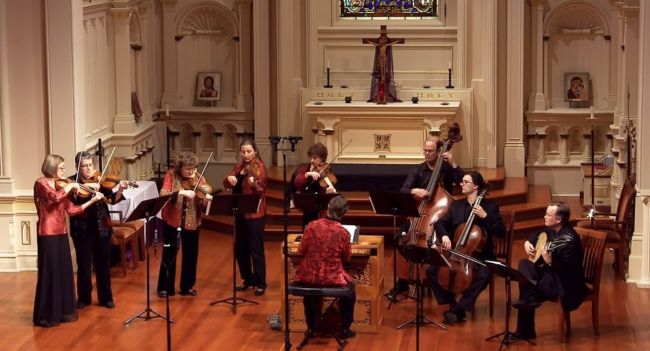There is no wrong way to listen to the music of Johann Sebastian Bach. You may prefer the austere, idiosyncratic piano interpretations of Glenn Gould; you may prefer the groundbreaking analog-synthesizer renditions painstakingly recorded by Wendy Carlos (whose early fans included Gould himself); or you may prefer faithful performances using only the instruments extant in the late 17th to mid-18th century period in which Bach lived. In that last case, the San Francisco early-music ensemble Voices of Music has you covered. You may remember us previously featuring their performances of Vivaldi and Pachelbel; in the video above, you can hear and see them play Bach.
More specifically, you can hear them play the second movement, Aria, from Bach’s orchestral suite in D Major, BWV 1068. The instruments they play it on include an Italian baroque violin from 1660 and an Austrian baroque viola from 1680, as well as more recently crafted examples rigorously modeled after instruments from that same era. “As instruments became modernized in the 19th century, builders and players tended to focus on the volume of sound and the stability of tuning,” says VoM’s explanation of their use of period instruments. “Modern steel strings replaced the older materials, and instruments were often machine made. Historical instruments, built individually by hand and with overall lighter construction, have extremely complex overtones — which we find delightful.”
Any lover of Bach’s music has heard this piece many times, not least due to its popularization in the late 19th century, in an arrangement by German violinist August Wilhelmj, as “Air on the G String.” The original work dates to “some time between the years 1717 and 1723,” writes music blogger Özgür Nevres, when Bach composed it for his patron Prince Leopold of Anhalt. It also holds the honor of being the first work by Bach ever recorded, “by the Russian cellist Aleksandr Verzhbilovich and an unknown pianist, in 1902 (as the Air from the Overture No. 3 in D major, BWV 1068).” But no matter how many different recordings from different eras of Bach’s orchestral suite in D Major in which you’ve steeped yourself, if you’ve only heard it played on modern instruments, a performance like Voices of Music’s shows that it still has surprises to offer.
